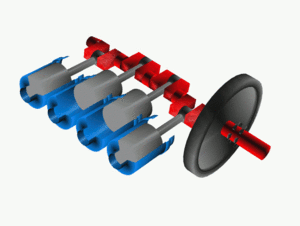Automotive telematics is a combination of telecommunication and informatics used in road transportation, vehicular technologies and road and vehicle safety.This research report analyzes this market on the basis of its market segments, major geographies, and current market trends.
Automotive
telematics is a combination of telecommunication and informatics used
in road transportation, vehicular technologies and road and vehicle
safety. Automotive telematics uses integrated systems comprising of
electronic devices such as sensors, wireless communication
technologies such as satellite navigation, mobile data and vehicle
tracking and computer science. The sensors such as gyroscope,
accelerometer, odometer etc. calculate parameters such as distance,
speed, direction and detect surrounding objects. This information
collected by sensors is send to the control unit over a wireless
communication network such as radio, cellular or satellite. The
control unit uses pre-programmed algorithms to process and analyze
such information and take decisions pertaining to vehicle motoring.
Such integrated systems provide functionalities such as transport
feasibility check, automatic vehicle motoring and road safety.
Thus, automotive
telematics has led to the inventions such as driving assistance
systems, automatic driving systems, vehicular emergency warning
systems, wireless safety communications and global positioning system
(GPS) navigation. This system based on telecommunications and
informatics is encapsulated into the Wireless Access for Vehicular
Environment (WAVE) and is used in Intelligent Transportation Systems
(ITS).
One of the major
factors driving the Automotive Telematics Market is increasing
occurrences of road accidents and vehicular mishaps. With the
increasing number of vehicles and transportation requirements, the
need for safety measures has grown immensely. The need to minimize
vehicular damages and human casualties caused during transportation
provides a major boost to the automotive telematics market, globally.
Another factor leading to the growth of automotive telematics market
is the need for efficient mass vehicular transportation. Increasing
number of vehicles on roads has led to issues such as traffic
congestions and disoriented transits. Automotive telematics systems
provide a solution over such problems through its intuitive motoring
guidance capabilities which help in redirecting traffic and automatic
vehicle motoring. Government policies and regulations towards road
safety also play an important role in incorporating automotive
telematics systems into commercial and personal vehicles.
However, automotive
telematics market faces few hurdles such as error rates and
communication breakdowns. Since the control unit takes major motoring
decisions based on information gathered by sensors, even an iota of
error could lead to catastrophic events. Moreover, due to its heavy
reliance on communication networks, automotive telematics systems
could be rendered useless in case of communication breakdown.
Automotive
telematics systems have found immense applications in fleet
telematics systems for navigating several vehicles and coordinating
mass transportation. The mobile vehicle system in individual vehicles
is in communication with a stationary communication system.
Additional features such as visualization of vehicular position on
digital maps and use of simple input devices provide ease of use and
efficiency to the automotive telematics systems. Other applications
of this system such as vehicle and trailer tracking and car clubs and
automobile insurance have provided promising prospects to the
automotive telematics market. Existing companies as well as new
entrants in the market are seeking to gain advantages by developing
diverse telematics systems using advanced technologies.
Some of the key
players in the automotive telematics market are Autotrac, ID Systems
Inc., Teletrac Inc., Fleetmatics IrL Limited, Trimble Navigations and
Omnitracs LLC, DigiCore, Masternaut Limited, MiX Telematics, TomTom
Telematics and Telogis.




